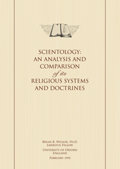III.I. Theism is Not an Essential Characteristic of Religion
It is beyond challenge that theism (i.e., monotheism, polytheism and pantheism) is not an essential characteristic of religion. Indeed, both scholars and the lay public generally regard as religions belief systems that are clearly non-theistic. Examples of such religions are given below.
III.II. Buddhism—A Non-Theistic Religion
Buddhism is not a system of theistic belief but is generally recognized as a religion, even though it contrasts sharply with Christianity. Whilst Buddhism does not deny the existence of gods, these beings are not credited with a role in any way approaching that of a supreme being or creator. Even in the Pure Land sects of Japan (Jodoshu and Jodoshinshu), in which there is an emphatic commitment to the idea of the Buddha himself as a saviour, this conception falls short of regarding the Buddha as a creator-god.
III.III. The Doctrines of Theravada Buddhism
Theravada Buddhism is often considered to be the tradition of Buddhism closest to the original teachings of Gautama Buddha. Its doctrines bear little resemblance to the theses set forth in Christianity or other monotheistic religions. None of the teachings of Theravada Buddhism indicate the existence of a supreme being or a creator-god. Rather than being the product of a creator-god, the phenomenal world is seen as being without substance, and man is held to be equally impermanent, and is not believed to have an immortal soul. All existence is characterized by suffering, and the impulse of Buddhist teaching is to liberate man from this condition. Man’s present circumstance is a consequence of his karma, the law of cause and effect according to which deeds in past lives almost totally determine the experience of subsequent lives. Since lives are like links in a causal chain, there is a “conditional origination” of each rebirth. Thus, man is not brought into being by a creator-god, nor is there any conception of a saviour-god, since only enlightenment will allow man to become liberated from the suffering of the chain of rebirths. Each man, under the guidance of religious instruction, must tread the path of enlightenment for himself. Buddhism does not deny the existence of gods as such, but these beings are not objects of worship, and they fulfil no special role. (They are residues and accretions from other religious traditions which Buddhism has accommodated.) Although conceptions of a creator-god and a saviour-god, immortal soul, and eternal punishment or glory are all lacking in Theravada Buddhism, none the less, Buddhism is readily and universally accorded the status of a world religion.
III.IV. Jainism Is an Atheistic Religion
Jainism is a recognized religion in India and in other countries where it is practised, and is normally included in the list of (usually eleven) great religions. Of it, Sir Charles Eliot has written, “Jainism is atheistic, and this atheism is as a rule neither apologetic nor polemical, but is accepted as a natural religious attitude.” Jains do not, however, deny the existence of devas, deities, but these beings are, like human beings, considered to be subject to the laws of transmigration and decay, and they do not determine the destiny of man. Jains believe that souls are individual and infinite. They are not part of a universal soul. Souls and matter are neither created nor destroyed. Salvation is to be attained by the liberation of the soul from the foreign elements (karmas) that weigh it down—elements that gain admission to the soul by the individual’s acts of passion. Such action causes rebirth among animals or inanimate substances: meritorious acts cause rebirth among the devas. Anger, pride, deceit and greed are the main obstacles to liberation of the soul, but man is master of his own destiny. By subduing the self and by doing harm to no being, and by leading an ascetic life, he may achieve rebirth as a deva. The moral rules for the devout believer are to show kindness without hope of return; to rejoice in the welfare of others; to seek to relieve the distress of others; and to show sympathy for the criminal. Self-mortification annihilates accumulated karma.
III.V. The Sankhya School of
Hinduism—A Non-Theistic Religion
The Hindu religion acknowledges as orthodox six ancient and divergent schools. One of these, Sankhya, is neither theistic nor pantheistic. Like Jainism, Sankhya teaches that primordial matter and the individual soul are both uncreated and indestructible. The soul may be liberated by knowing the truth about the universe and by control of the passions. In some texts, Sankhya denies the existence of a personal supreme deity, and, in any case, any concept of deity is regarded as superfluous and potentially self-contradictory, since the working of karma governs man’s affairs up to that point where he himself can determine that he seeks liberation. The four goals of Sankhya are similar to those of Buddhism: to know suffering, from which man must liberate himself; to bring about the cessation of suffering; to perceive the cause of suffering (the failure to discriminate between soul and matter); and to learn the means of liberation, namely, discriminating knowledge. Like other schools, Sankhya teaches the karmic principle: rebirth is a consequence of one’s actions, and salvation is escape from the cycle of rebirths.
III.VI. The Non-Theistic Character of Sankhya
Sankhya embraces a form of dualism that does not revolve around the existence of a god or gods. This is not the Christian dualism of good and evil, but a radical distinction between soul and matter. Both are uncreated, infinitely existing items. The world results from the evolution of matter. The soul, however, is unchanging. The soul suffers because it is in captivity to matter, yet this captivity is an illusion. Once the soul is aware that it is not part of the material world, the world ceases to exist for that particular soul, and it is free. According to Sankhya theory, matter undergoes evolution, dissolution and quiescence. In evolving, matter produces intellect, individuality, the senses, moral character, will, and a principle which survives death and which undergoes transmigration. By being connected with soul, the physical organism becomes a living being. Only in this connection is consciousness realised: neither matter on its own nor soul on its own is conscious. Although the soul is a vitalizing element, it is not itself the life which ends in death, nor is it life which is transmitted from one existence to another. Although it does not itself act or suffer, the soul reflects the suffering that occurs, much as a mirror reflects. It is not the intellect, but is an infinite and passionless entity. Souls are innumerable and distinct from one another. The goal is for the soul to free itself from illusion and so from captivity. Once liberated, the condition of the soul is equivalent to Nirvana in Buddhism. Such liberation might occur before death, and the task of the liberated one is to teach others. After death, there is a possibility of total liberation without threat of rebirth. Sankhya makes no objection to belief in popular divinities, but These are not part of its operative order. It is knowledge of the universe which produces salvation. In this sense, control of the passions, and not moral conduct, is central. Good works can produce only a lower form of happiness. Nor is sacrifice efficacious. Neither ethics nor rituals are of great importance to the Sankhya scheme of things.
III.VII. The Inadequacy of a Theistic Criterion
From the foregoing examples of religious belief systems, it is apparent that belief in a supreme being or any form of theism is an inadequate criterion of religion. Despite the lingering, out-dated prejudice of some Christian commentators, this point would generally be immediately endorsed by comparative religionists and sociologists of religion. Status as a religion would not be denied to Buddhism, Jainism or the Sankhya School of Hinduism, the absence of any conception of a supreme being or creator god notwithstanding.
III.VIII. The Case of Taoism
Taoism, too, has generally been recognised as a religion, and text books of comparative religion usually include it, despite the difficulty of rendering its central beliefs in a coherent form. In contrast to revealed religions, Taoism drew on nature worship, mysticism, fatalism, political quietism, magic and ancestor worship. It was officially recognized as an organized religion in China for centuries, with temples, worship, and clergy. It acquired conceptions of supernatural beings, including the Jade Emperor, Lao-Tzu, Ling Po (marshall of supernatural beings), together with the Eight Immortals of Chinese folklore, the City God, the God of the Hearth, among others, together with innumerable spirits. Taoism lacks, however, a supreme creator, a saviour-god of the Christian kind and an articulated theology and cosmology.





























